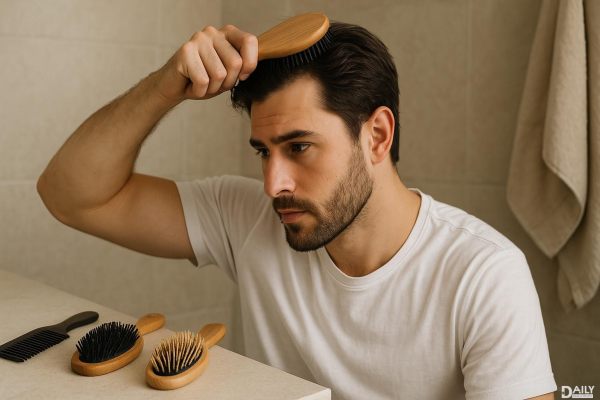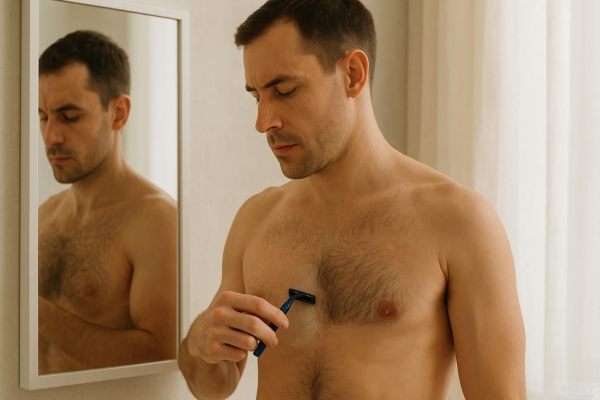If you're wondering which finger a man should wear his wedding ring on, the answer is simple: the fourth finger of the left hand. This tradition, often referred to as the "ring finger," has deep historical and cultural roots, especially in the U.S. and many Western countries. But why this finger? And is it the same everywhere? Let’s dive into the fascinating history, symbolism, and modern twists surrounding this age-old custom.

The tradition of wearing a wedding ring on the fourth finger of the left hand dates back to ancient times. The Romans believed that this finger contained the "vena amoris," or the "vein of love," which was thought to run directly to the heart. While modern anatomy has debunked this myth, the romantic notion stuck and became a cornerstone of wedding traditions. Over time, this practice spread across Europe and eventually made its way to the U.S., where it remains the standard today.
In many cultures, the left hand is associated with the heart, which is why it became the preferred hand for wedding rings. This symbolism reinforces the idea that marriage is a union of hearts. Additionally, the left hand is often considered the "receiving" hand, making it a fitting choice for a ring that symbolizes the acceptance of a lifelong commitment. In contrast, the right hand is often seen as the "giving" hand, which is why engagement rings are sometimes worn on the right hand before the wedding.
While the left-hand ring finger is the norm in the U.S. and many Western countries, it’s not universal. In some cultures, such as those in India, Russia, and parts of Eastern Europe, wedding rings are traditionally worn on the right hand. These variations often stem from religious or cultural beliefs. For example, in Orthodox Christianity, the right hand is considered more sacred, making it the preferred choice for wedding rings. So, if you’re traveling or marrying into a different culture, don’t be surprised if the rules change!
In recent years, some men have started to challenge traditional norms by wearing their wedding rings on different fingers or even on a chain around their neck. This trend is particularly popular among athletes, musicians, and others who find rings inconvenient for their daily activities. Additionally, same-sex couples have embraced creative ways to symbolize their commitment, often choosing rings that reflect their personal style rather than adhering to tradition. The key takeaway? There’s no one-size-fits-all answer—what matters most is what feels meaningful to you.
When selecting a wedding ring, comfort and style are just as important as tradition. Men’s rings come in a variety of materials, from classic gold and platinum to modern options like tungsten and titanium. Consider your lifestyle and daily activities when choosing a ring. For example, if you work with your hands, a durable material like tungsten might be a better choice than a softer metal like gold. And don’t forget about fit—make sure the ring feels comfortable on your finger, whether it’s the left or the right.
If you’re left-handed, you might wonder if wearing your wedding ring on your dominant hand is practical. While tradition suggests the left hand, there’s no hard and fast rule. Many left-handed men choose to wear their rings on the right hand to avoid wear and tear or discomfort. Ultimately, the decision is yours—what matters most is that the ring symbolizes your commitment and feels right for you.
Beyond the finger it’s worn on, the wedding ring itself holds profound symbolism. Its circular shape represents eternity, with no beginning or end, mirroring the lifelong commitment of marriage. The act of exchanging rings during a wedding ceremony is a powerful gesture that signifies love, trust, and partnership. Whether you wear it on your left hand, right hand, or even around your neck, the ring serves as a constant reminder of the vows you’ve made.
While engagement rings are traditionally associated with women, more men are embracing the idea of wearing one. This trend reflects shifting gender norms and a growing emphasis on equality in relationships. Men’s engagement rings often feature simpler designs, such as bands with subtle engravings or unique textures. If you’re considering an engagement ring, think about how it will pair with your wedding ring and whether you’ll wear both on the same finger.
At the end of the day, the finger you choose to wear your wedding ring on is a personal decision. While tradition offers a clear guideline, there’s no rule saying you have to follow it. Whether you stick with the left-hand ring finger, opt for the right hand, or go for a completely unconventional approach, the most important thing is that your ring symbolizes your commitment and feels authentic to you. After all, marriage is about love, not just following the rules!
























